






When I started working at Gardener's Supply in the 1990s, my Vermont backyard was pretty green—with grass. Today, there's just a tiny bit of the original lawn left. Most of the available space has given way to trees, shrubs, perennials, annuals and stonework. Watch a slideshow of my garden in Burlington, VT.
In addition to my work at Gardener's Supply, I work in the gardening division at Church Hill Landscapes. In that role, I maintain dozens of gardens and learn a lot in the process. I believe that all gardening is good gardening.
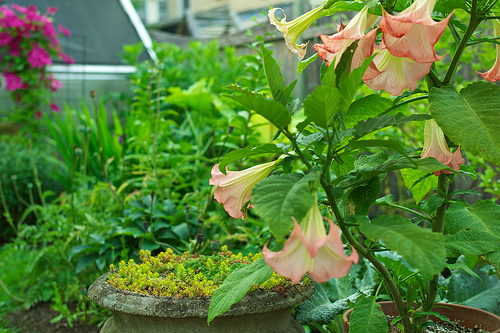 This plant was bought in a 8" pot in spring and repotted into a 12" pot.
This plant was bought in a 8" pot in spring and repotted into a 12" pot. 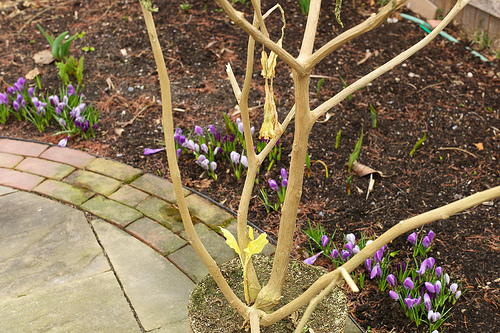 After a winter in the dark basement, a brugmansia looks pretty ragged. Hard to believe there is any life in it, but the pale green shoot at the base shows promise.
After a winter in the dark basement, a brugmansia looks pretty ragged. Hard to believe there is any life in it, but the pale green shoot at the base shows promise. 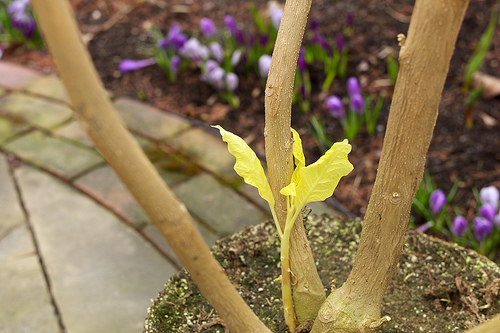 Overwintered brugmansias will grow from the roots, as this shoot shows, and from last year's woody growth.
Overwintered brugmansias will grow from the roots, as this shoot shows, and from last year's woody growth. 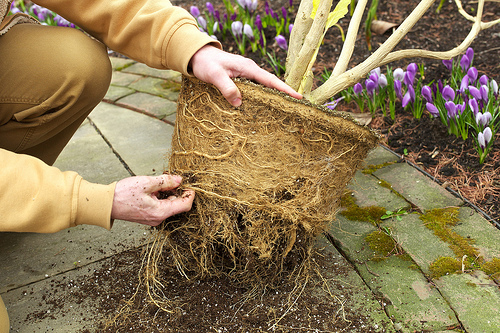 Remove the plant from its pot and rejuvenate it by teasing out the roots with your fingers. Don't be worried if you break a few roots. This technique, called "root-pruning," doesn't harm the plant.
Remove the plant from its pot and rejuvenate it by teasing out the roots with your fingers. Don't be worried if you break a few roots. This technique, called "root-pruning," doesn't harm the plant. 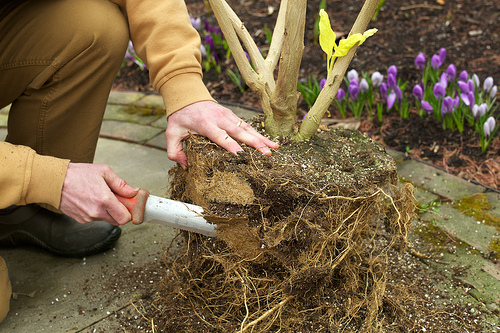 Use a soil knife or trowel to break apart dense masses of roots. I plan to use a pot that's the same size as last season, so I'm trimming about 2" from the original root ball.
Use a soil knife or trowel to break apart dense masses of roots. I plan to use a pot that's the same size as last season, so I'm trimming about 2" from the original root ball. 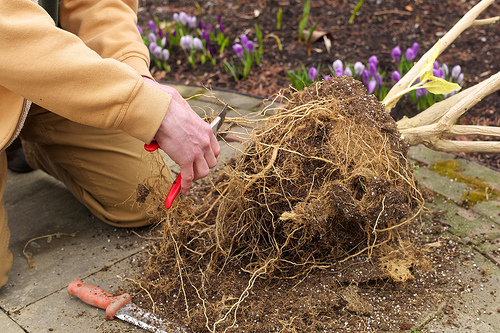 Use a pair of pruners to trim the roots.
Use a pair of pruners to trim the roots. 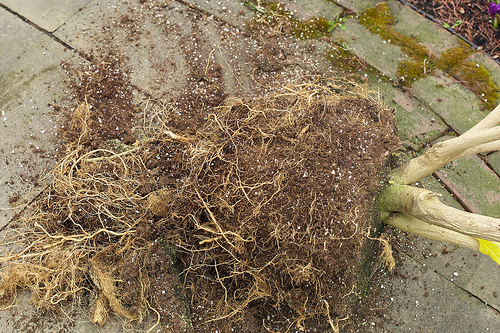 When finished, the root ball looks a little rough — and considerably smaller. Fresh soil, fertilizer and water will jumpstart the dormant plant.
When finished, the root ball looks a little rough — and considerably smaller. Fresh soil, fertilizer and water will jumpstart the dormant plant. 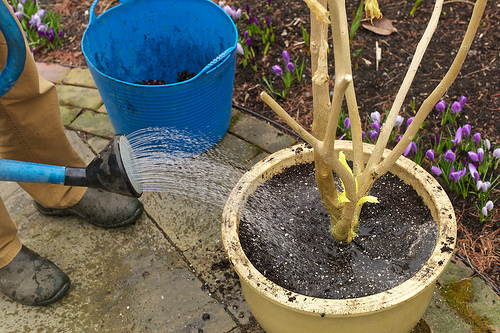 Position the trimmed root ball in the pot so that the soil surface will be a couple inches below the rim. Make sure the root ball is firmly seated in the new soil. Water thoroughly to settle the soil.
Position the trimmed root ball in the pot so that the soil surface will be a couple inches below the rim. Make sure the root ball is firmly seated in the new soil. Water thoroughly to settle the soil. 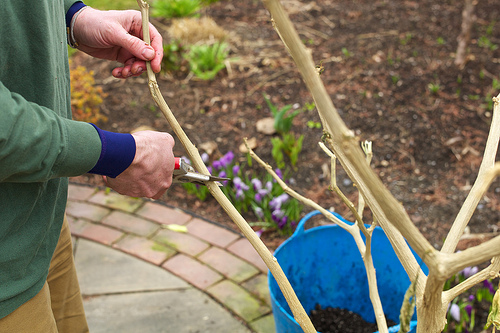 Usually there is some die-back during the winter, so you'll have to prune a few inches off the tips. To tell if your branch is still viable, scrape the bark with the blade of your pruners to see if there is a bright green layer just below the surface.
Usually there is some die-back during the winter, so you'll have to prune a few inches off the tips. To tell if your branch is still viable, scrape the bark with the blade of your pruners to see if there is a bright green layer just below the surface. 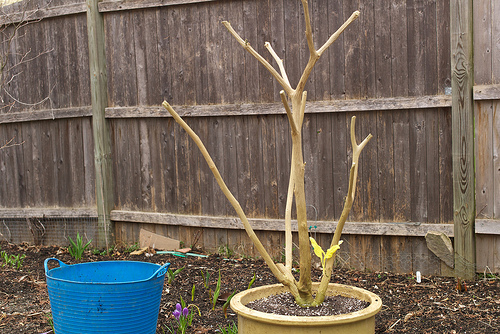 Prune as you wish. I prune into an open vase shape. New growth will support the dangling, trumpet-shaped blooms.
Prune as you wish. I prune into an open vase shape. New growth will support the dangling, trumpet-shaped blooms.
FOR high drama in the garden, there's nothing quite like a brugmansia in full bloom. Known as the angel's trumpet, this show-stopper has 6" to 10" blooms that dangle from sturdy branches. In one season, these shrubby, subtropical plants can easily reach 6'. A plant that's been saved from season to season will grow even taller, producing flushes of bloom that can include dozens of flowers.
Because of their beauty, brugmansias are worth saving from year to year. It's easy.
You'll find brugmansias at garden centers in spring — usually sold with the annuals. Grow the plant in a container and fertilize regularly. Because these plants are thirsty, invest in a self-watering pot, or retrofit an existing pot with a self-watering reservoir.
In late summer or fall, when temperatures drop near freezing, cut back on watering and stop fertilizing. Before the first frost, move the brugmansia into storage to go dormant. All you need is a cool, dark, frost-free place — 30 to 45 degrees F. is ideal. I keep mine in the cellar. Water it occasionally through the winter to keep the root ball barely moist.
In spring, when nighttime temperatures are not predicted to dip below 32 degrees F., bring the plant out and repot it, as described in the slideshow.
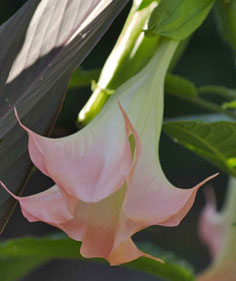
Copyright © www.100flowers.win Botanic Garden All Rights Reserved